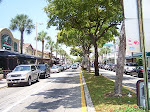

Pisa, once a thriving port, entry to Tuscany, naval power. Now the city with the bell tower. Having been settled long before the birth of Christ, Pisa was the only port between Genoa and Ostia. Genoa was still just a small, sleepy seaside town, its rise in stature still several centuries in the future. Ostia was the port city for Imperial Rome. Archaeological digs have recovered evidence of trade with the Greeks and the Gauls.
It rose in power until the 11th century when it reached its peak in power and influence. At this point it was a major port for Mediterranean trade. By this time the city of Genoa had risen in power and rivaled Pisa in trade and naval strength. Along with competition from Venice, Pisa slowly lost its position as a power in the Mediterranean. Another factor was the silting up of the harbor. One of the important factors, positioned at the mouths of two rivers, was to doom it in the long run. The constant erosion eventually caused the city to become land locked and several miles from the cost.
But by this point, it had grown in favor with the Roman Catholic Church and a magnificent cathedral was to be constructed. The compound would include the cathedral, a baptistery and a bell tower as was the common arrangement at the time. Construction on the bell tower began in 1173 and continued for almost 200 years. Almost immediately the tower began to tilt. The
 massive weight of the marble caused the foundation to sink into the soft soil. During construction, the builders tried to correct the tilt, by making the columns on the lower side slightly longer. Though this corrected the lean for one level, it continued to sink.
massive weight of the marble caused the foundation to sink into the soft soil. During construction, the builders tried to correct the tilt, by making the columns on the lower side slightly longer. Though this corrected the lean for one level, it continued to sink.Various pieces of the tower had been replaced due to the abnormal stress on the structure. Attempts were made in recent times to halt the tilt and return the tower to stability. Eventually by enlarging the foundation and removing some soil from the high side. After being closed for a few years, the tower was reopened for the public to climb.
Climbing the tower is accomplished by a staircase built into the outer wall. Light is provided by
 doors onto the balconies circling the tower. Once a climber reaches the last balcony, they must
doors onto the balconies circling the tower. Once a climber reaches the last balcony, they must exit the tower and a small spiral staircase provides access to the open colonnade on the top of the tower. And even narrower stair provides access to a narrow path on top of the last colonnade. The view from the top offers a panorama of the surrounding river valley and the cathedral grounds.
exit the tower and a small spiral staircase provides access to the open colonnade on the top of the tower. And even narrower stair provides access to a narrow path on top of the last colonnade. The view from the top offers a panorama of the surrounding river valley and the cathedral grounds.The area round the cathedral is mostly souvenir shops with everything from miniatures of the tower to leather goods, to local handicrafts(Pinocchio is from Pisa). I usually lean towards locally produced items, since they are more authentic to the region and benefit the locals, not a large factory in China.
Damron Vacations can assist in planning your trip to Tuscany and the Leaning Tower of Pisa. From flights directly into Pisa, or maybe into Rome and a rental car, they agents can help your Tuscan experience be all it can be.





No comments:
Post a Comment